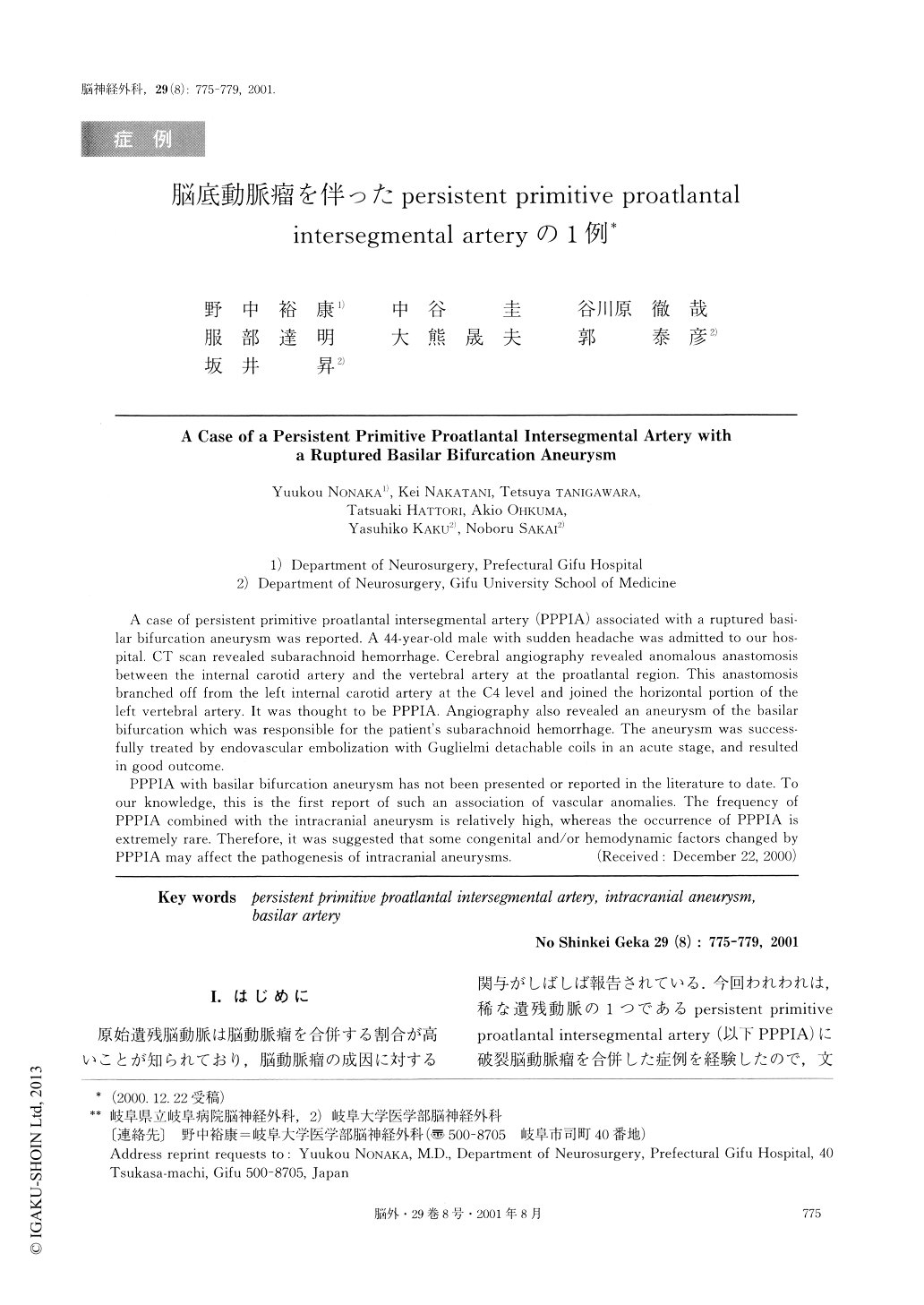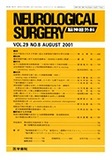Japanese
English
- 有料閲覧
- Abstract 文献概要
- 1ページ目 Look Inside
I.はじめに
原始遺残脳動脈は脳動脈瘤を合併する割合が高いことが知られており,脳動脈瘤の成因に対する関与がしばしば報告されている.今回われわれは,稀な遺残動脈の1つであるpersistent primltiveproatlantal intersegmental artery(以下PPPIA)に破裂脳動脈瘤を合併した症例を経験したので,文献的考察を加え報告する.
A case of persistent primitive proatlantal intersegmental artery (PPPIA) associated with a ruptured basi-lar bifurcation aneurysm was reported. A 44-year-old male with sudden headache was admitted to our hos-pital. CT scan revealed subarachnoid hemorrhage. Cerebral angiography revealed anomalous anastomosisbetween the internal carotid artery and the vertebral artery at the proatlantal region. This anastomosisbranched off from the left internal carotid artery at the C4 level and joined the horizontal portion of theleft vertebral artery. It was thought to be PPPIA. Angiography also revealed an aneurysm of the basilarbifurcation which was responsible for the patient's subarachnoid hemorrhage. The aneurysm was success-fully treated by endovascular embolization with Guglielmi detachable coils in an acute stage, and resultedin good outcome.
PPPIA with basilar bifurcation aneurysm has not been presented or reported in the literature to date. Toour knowledge, this is the first report of such an association of vascular anomalies. The frequency ofPPPIA combined with the intracranial aneurysm is relatively high, whereas the occurrence of PPPIA isextremely rare. Therefore, it was suggested that some congenital and/or hemodynamic factors changed byPPPIA may affect the pathogenesis of intracranial aneurysms.

Copyright © 2001, Igaku-Shoin Ltd. All rights reserved.


